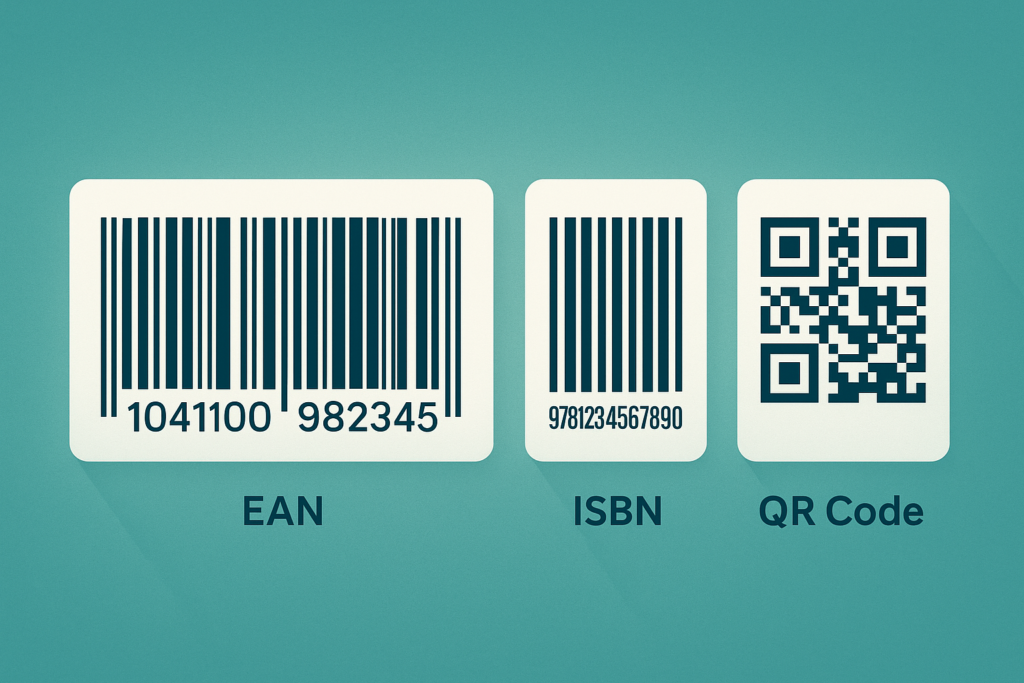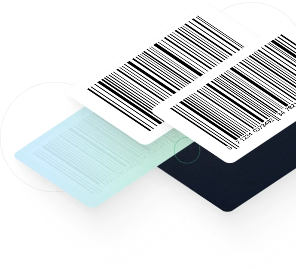
If you’re selling products online or managing inventory, you’ve probably encountered different types of barcodes — including EAN codes, UPC codes, ISBN codes, and QR codes. While they may look similar at first glance, each code serves a different purpose and is used in specific industries and systems.
Understanding the difference between these barcodes is crucial for accurate product identification, inventory management, and improving search visibility on platforms like Amazon, Bol.com, and eBay. In this blog, we’ll break down the differences between EAN codes and other common barcodes, so you can use the right code for the right situation.
An EAN code (European Article Number) is a 13-digit barcode used globally for identifying retail products. It’s the most commonly used barcode format in Europe and many other regions worldwide.
Structure of an EAN Code:
Purpose of an EAN Code:
Example:
A bottle of water with EAN code 8712345678901 can be identified and tracked globally, ensuring that the product is recognized in any retail system.
UPC codes are the North American equivalent of EAN codes. They are primarily used in the United States and Canada.
Structure:
Purpose:
Key Difference:
Example:
A soda bottle sold in the US may have a UPC code 012345678905, while the same product sold in Europe would have an EAN code.
ISBN codes are used specifically for identifying books and other publications.
Structure:
Purpose:
Key Difference:
Example:
A book with ISBN code 978-3-16-148410-0 can be uniquely identified in any library or bookstore worldwide.
QR codes are two-dimensional barcodes that can store more information than EAN or UPC codes.
Structure:
Purpose:
Key Difference:
Example:
A product packaging with a QR code linking to the brand’s website or product instructions.
⸻
GTIN is a general term that refers to all internationally recognized product identification codes, including EAN, UPC, and ISBN.
Structure:
Purpose:
Key Difference:
Example:
A pack of 12 bottles might have a GTIN-14 code to differentiate it from the single bottle’s EAN code.
Using the wrong code or failing to provide a valid product identifier can lead to:
❌ Product rejection by marketplaces
❌ Poor search visibility
❌ Incorrect inventory tracking
❌ Lost sales due to customer confusion
For example:
If you’re selling products online or in retail stores, you need a valid EAN code to ensure proper product identification and marketplace acceptance.
✅ Make sure you’re using globally recognized EAN codes.
✅ Each product variation (size, color, etc.) should have a unique EAN code.
✅ Keep a record of your EAN codes to avoid duplication and simplify inventory management.
✔️ Always verify the format and validity of your EAN code before listing a product.
✔️ For books, use an ISBN code instead of an EAN code.
✔️ For North American markets, use UPC codes if the platform supports them.
✔️ Use QR codes for marketing and interactive customer engagement.
While EAN codes, UPC codes, ISBN codes, and QR codes all serve different purposes, understanding their differences is essential for effective product management and sales. EAN codes are essential for selling on global marketplaces like Amazon and Bol.com, while ISBN codes are used for books, UPC codes for North American products, and QR codes for digital content and marketing.
Need a valid EAN code for your products? Get your EAN codes today at Eancodeshop.co.uk and start listing your products with confidence!

Here you will find the most common questions we had customers ask over the years. Can’t find the answer you are looking for? Please reach out to our support agents and get an answer within 24hours on Business Days.
March 4, 2025
Introduction If you’re selling products online or managing inventory, you’ve probably encountered different types of barcodes — including EAN codes, UPC codes, ISBN codes, and QR codes. While they may look similar at first glance, each code serves a different purpose and is used in specific industries and systems. Understanding the difference between these barcodes […]
March 4, 2025
Introduction Selling on major marketplaces like Amazon, Bol.com, and eBay is a huge opportunity for businesses. These platforms attract millions of visitors daily, offering sellers a direct path to a massive customer base. However, listing your products correctly is essential if you want to succeed — and one key requirement for most marketplaces is a […]